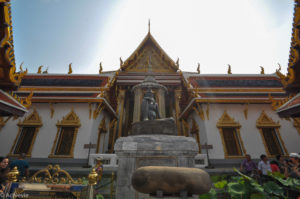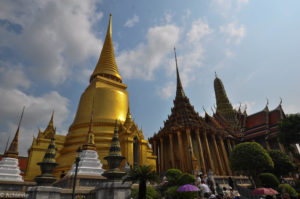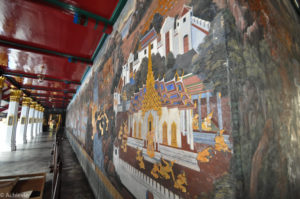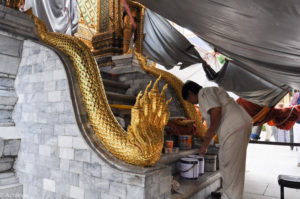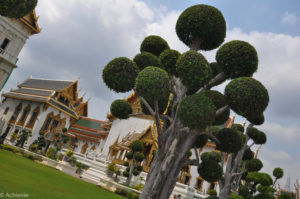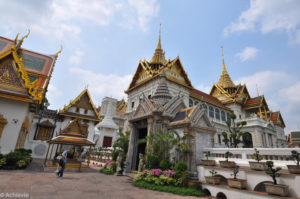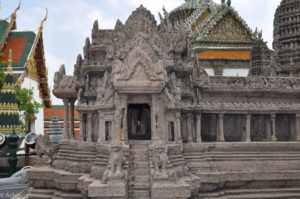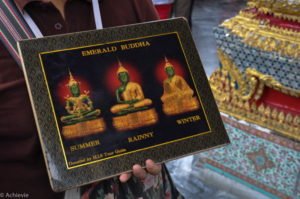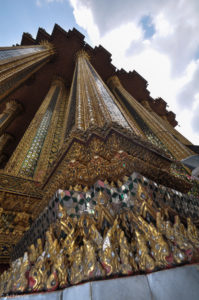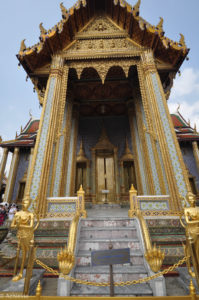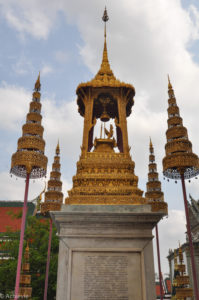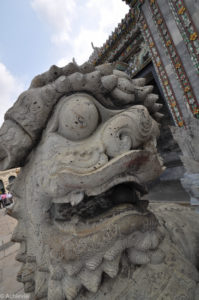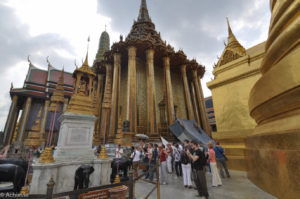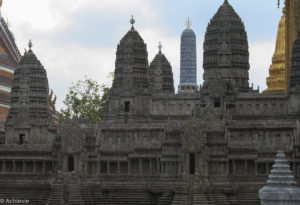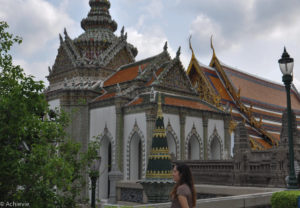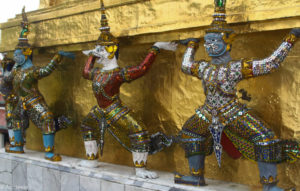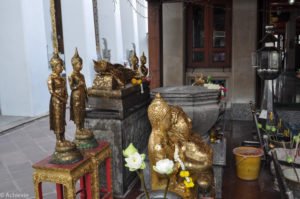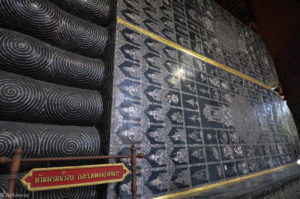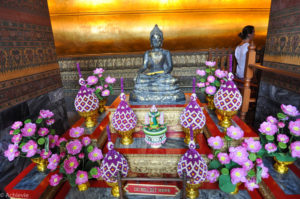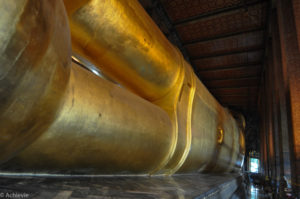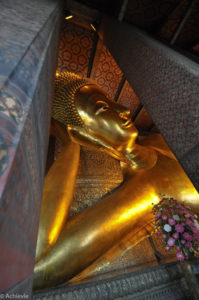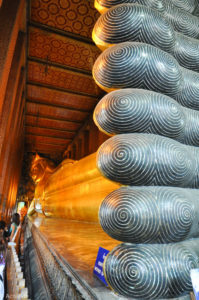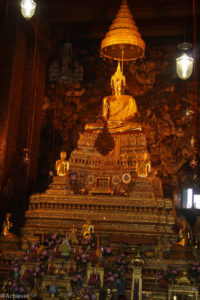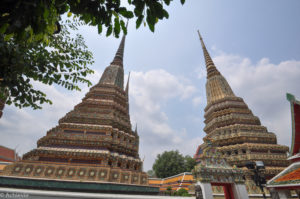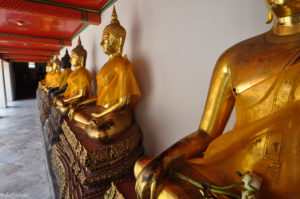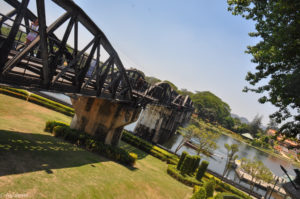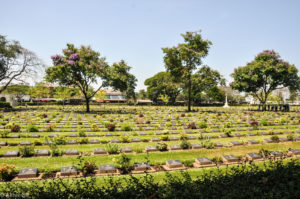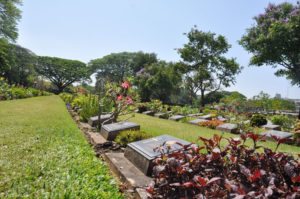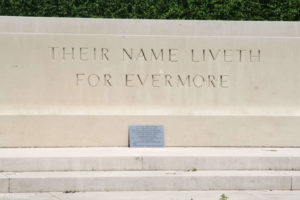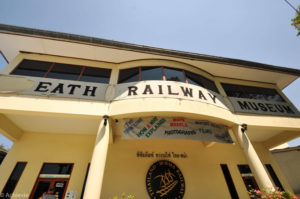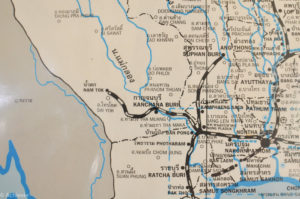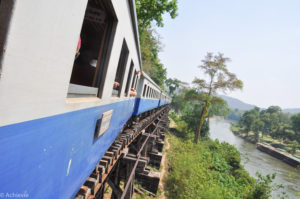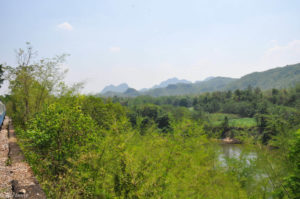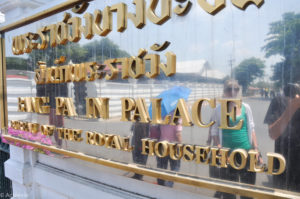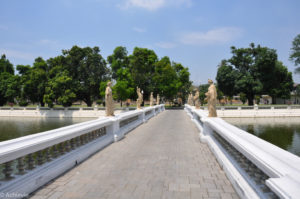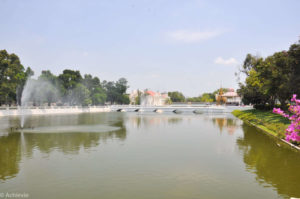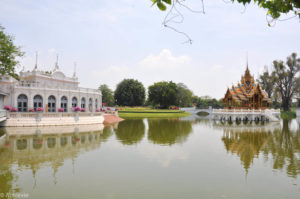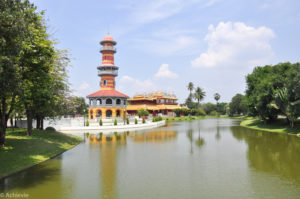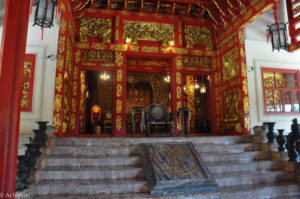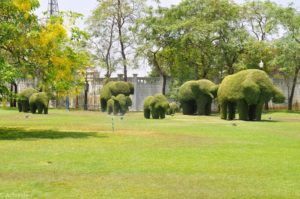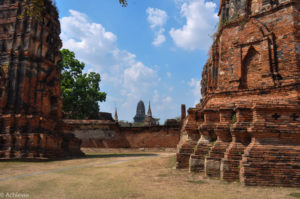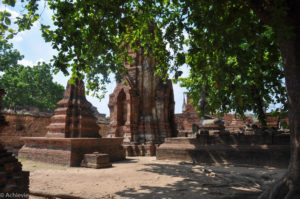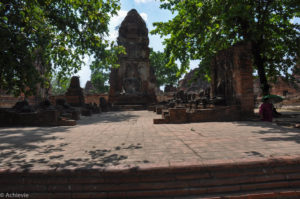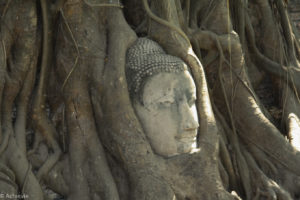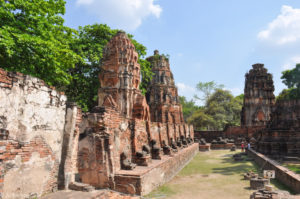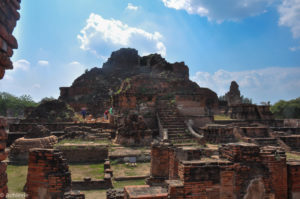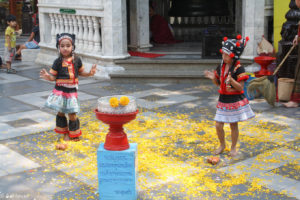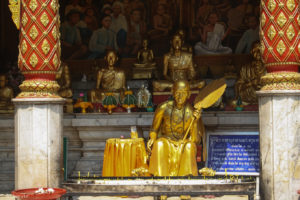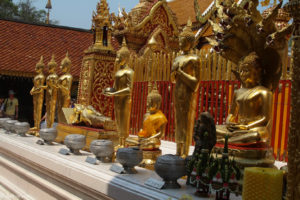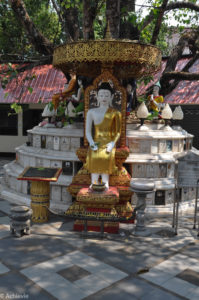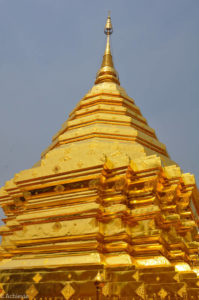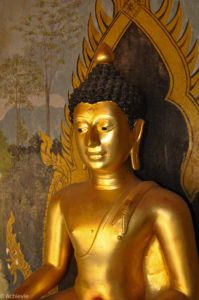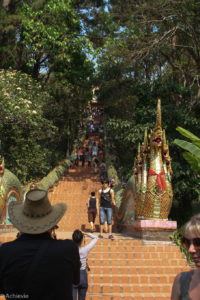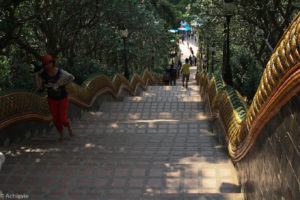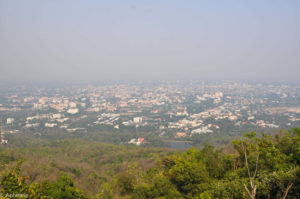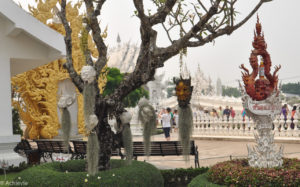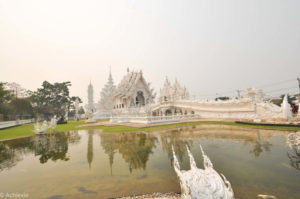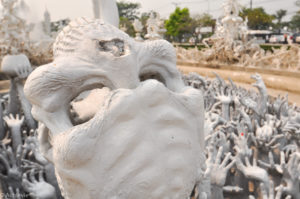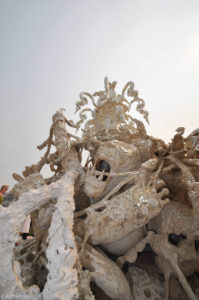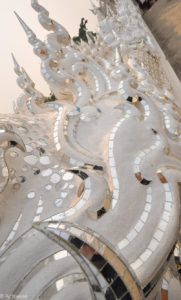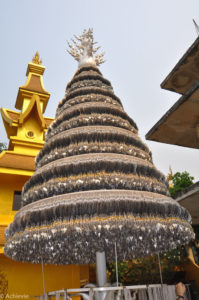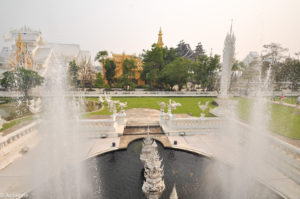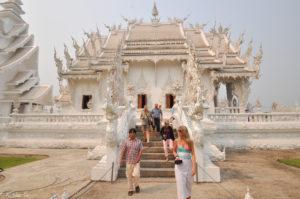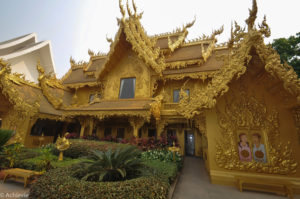Grand Palace, Bangkok
This is a must-see, clear as day. It’s Bangkok most famous landmark and I have to say, it’s impressive to see. What struck me is the eye for detail. It was built in 1782 and was the home of the Thai King, the Royal Court and administrative seat of government for 150 years. It’s actually an entire complex, which captures a lot of different buildings. The Wat Phra Kaew (Temple of the Emerald Buddha) is the most famous one, dating back to the 14th century. The robes of the Buddha are changed every season by the King of Thailand himself, an important ritual in the Buddhist calendar.
An important note: there’s a strict dress code in place (as in most religious or royal venues). You must wear long pants and shirts with at least short sleeves. If not properly dressed, there’s a booth near the entrance that provides clothes to cover you up properly, against a deposit of course. Otherwise you’re denied access to the site.
Wat Pho, Bangkok
Wat Pho, or the Temple of the Reclining Buddha, is located at a 10 minute walk from the Grand Palace. It’s again an entire complex, but most impressive is the Buddha which measures 46 metres long and 15 metres tall and is covered in gold leaf. It has 108 positive actions and symbols that helped Buddha to perfection. Correspondingly, 108 bowls are lined up the length of the walls, to drop small pennies in as you wander around the Buddha. These gifts go to the monks helping the renovations and preservation of Wat Pho.
Bridge River Kwai, War Museum and the War Cemetery, Kanchanaburi
During World War II, Japan constructed the 415 kilometre railway line from Ban Pong, Thailand to Thanbyuzayat, Burma. The purpose of the railway was to transport cargo to India, to back-up their planned attack on India. The construction work was done by prisoners of war and slave labourers in harsh conditions. It took 1 year to finish. Because of the difficult terrain, thousands of them lost their lives, which has caused it to be known as the Death Railway. Most of them have been laid to rest at the War Cemetery in Kanchanaburi.
In 1944, the bridge was bombed by allied forces, which destroyed several sections. Today, it shows 2 of its central spans rebuilt and the track is developed into a walkway with slide platforms, to offer tourists a great view over the natural beauty of the surrounding mountains and valleys. A small tourist train runs back and forth across the bridge as well. The original parts of the bridge are displayed in the War Museum.
You can actually ride the train on the Death Railway, which we did from Nam Tok station. The dramatic views were ideal for some picture-taking.
Bang Pa In Palace or Summer Palace of the Kings, Ayutthaya
The Palace is located along the banks of the Chaopraya River, about 60 kilometers north of Bangkok. It dates back to the 17th century, but fell into disuse until it was revived by King Rama IV in the 19th century. Today it’s only infrequently used, in view of state occasions.
What’s striking, compared to the other buildings visited in Bangkok, is that the design is very European. They are laid along a rectangular lake, which eventually ends up in a rounder pond with a Thai-style pavilion in the middle.
You must again be “properly dressed” to enter the Varobhas Bimarn residence, which for men means no shorts, and women must wear a skirt. Sarongs are available in the building next door.
The ruins of Ayutthaya
Ayutthaya was founded around 1350. Before it got destroyed by the Burmese in the 18th century, it grew to be one of the world’s largest urban areas and a centre of global diplomacy and commerce, taking advantage of its position in the midst of three rivers. Today it’s an extensive archaeological site and defined as Unesco World Heritage.
This once great city was made with a systematic pattern of streets and canals throughout the entire island and dividing the urban space into different zones, each with its own characteristic use and therefore architecture. The urban planning template of the entire island remains visible and intact, along with the ruins of all the major temples and monuments. The ruins of the most important buildings have been repaired and sometimes reconstructed.
Doi Suthep, Chiang Mai
Doi Suthep is one of the most sacred temples in the northern part of Thailand. As it’s located at the top of the mountain, in order to get to the Wat Phra That itself, the 306-step staircase can be taken. Another option is taking a lift up and then returning by going down the stairs (that’s the way we did it). Once reached the top, the terraces offer great views overlooking Chiang Mai city.
It was built as a Buddhist monastery and it still is today. Pilgrims queue to leave lotus blossoms or any other offerings at the shrines surrounding Buddha statues in all different poses and materials.
White Temple (What Ron Khun), Chiang Rai
This temple is looking totally different from the other ones and that’s probably why it’s my favourite. White – instead of gold – is used to embody the sacredness of the temple. The mirrors embedded in the structure reflect the light, which represents Buddha’s wisdom shining out across the earth and the entire universe.
The temple building symbolizes the realm of the Buddha and rising to a state of nirvana. To enter it, you have the pass over a pool of ghostly hands representing suffering souls in hell. To turn back, the only way is to ascend “heavenwards” trough the pathway guarded over by demons. Inside are particular murals, showing modern culture icons (like superman and Neo from the Matrix – hell yeah!) instead of the traditional characters typically used.
Another remarkable detail is the golden toilet. Gold was chosen to indicate worldliness. It’s probably the most luxurious toilet in the country.
The complex is a piece of art still in progress. Its construction started in 1998 and is expected not to be finished before 2020.
Other Countries we visited
Have a look at the other countries we ‘achievied’ to visit, and other Achievies…
